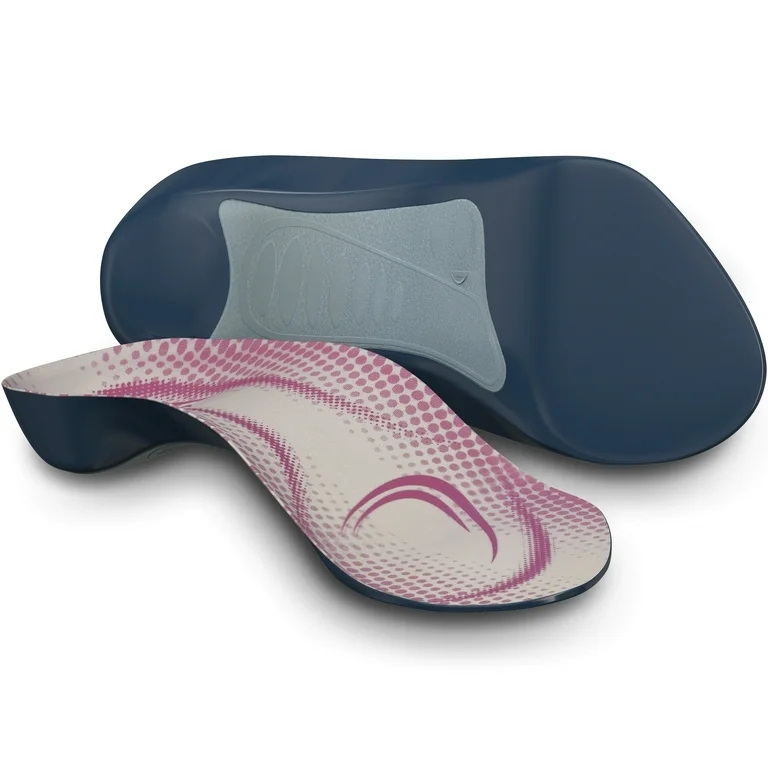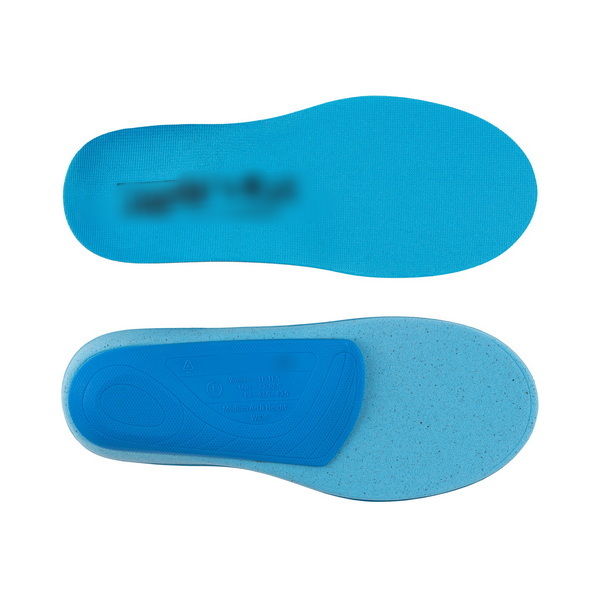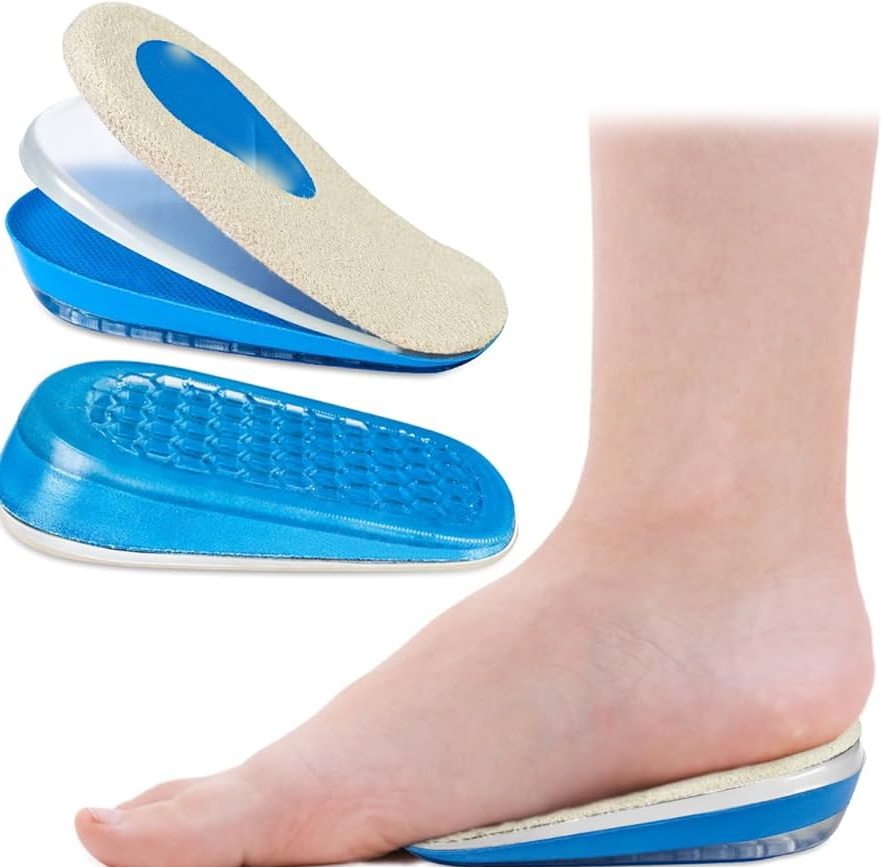Views: 222 Author: Edvo Publish Time: 2025-10-27 Origin: Site











Content Menu
● Understanding Arch Support: Why It Matters
● Overview of Dr Scholl's Arch Support Inserts
● Technology Behind Dr Scholl's Custom Fit Inserts
● Performance and Real-World Comfort
● Strengths of Dr Scholl's Arch Support Inserts
● Weaknesses and Potential Downsides
● Consumer Feedback and Popular Models
● Comparing Dr Scholl's with Other Over-the-Counter Orthotics
● Maintenance and Replacement Tips
● Alternatives Worth Considering
● Are Dr Scholl's Inserts Worth the Money?
● Frequently Asked Questions (FAQs)
>> 1. Are Dr Scholl's arch support inserts suitable for long working hours?
>> 2. How often should these inserts be replaced?
>> 3. Can they help with plantar fasciitis?
>> 4. Are they compatible with sports shoes?
>> 5. What's the best way to clean Dr Scholl's inserts?
Arch support inserts have become an essential accessory for anyone who values comfort and long-term foot health. Among the numerous brands available, Dr Scholl's arch support inserts are among the most recognized and widely used solutions. Built to target pain relief, improve posture, and enhance daily comfort, they claim to be effective for various foot-related conditions. But how good are they really? This article provides a thorough evaluation of their advantages, limitations, and overall performance, combining professional insights, material examination, and consumer feedback.

The structure of the human foot involves a complex system of bones, ligaments, and tendons forming natural arches. These arches act like shock absorbers when we walk or run. Insufficient arch support can lead to problems such as plantar fasciitis, heel pain, knee discomfort, and even back problems. This is why using well-designed arch inserts can play a key role in maintaining balance and reducing strain.
For those who spend long hours on their feet, such as retail workers, athletes, or healthcare professionals, the right level of arch support translates to muscle relief, energy efficiency, and better joint alignment. Inserts also help prevent fatigue from prolonged standing or high-impact activities.
Dr Scholl's has been a leader in foot care for decades, offering a range of orthotic solutions targeting different foot conditions. Their arch support inserts are primarily designed for everyday use with the following features:
- Contoured arch support: Aims to improve alignment and reduce the risk of strain.
- Shock-absorbing design: Reduces impact during walking or running.
- Cushioned gel pads: Offer comfort for prolonged standing and physical activities.
- Anti-slip top cover: Keeps the insert in place within the shoe.
These inserts come in various versions, including *Custom Fit Orthotics*, *Heavy Duty Support Insoles*, *Women's Extra Support Orthotics*, and *Heel & Arch Pain Relief Insoles*, among others. Each type targets specific needs, from general comfort to relief for chronic pain sufferers.
Dr Scholl's introduced a “foot mapping” kiosk system that measures pressure across your feet using sensors. After collecting data, the device recommends one of their predesigned orthotic models. However, experts have debated the accuracy of this method.
The pressure-sensing system mainly identifies weight distribution under static standing conditions—it does not capture dynamic gait patterns or biomechanical issues. Consequently, the inserts suggested by these kiosks may not truly be custom; they are simply categorized into a few pre-set shapes and arch heights. Still, for many casual users, the experience provides a convenient and affordable solution compared to fully customized orthotics.
The effectiveness of Dr Scholl's arch support inserts largely depends on the user's condition and expectations. The cushioning offers immediate relief, especially for fatigue or mild heel discomfort. The flexible arch design adapts well to most shoes and provides day-long comfort for regular use.
However, critiques from professionals indicate that the inserts may be too soft for those needing firm biomechanical correction. Because the foam and gel layers compress easily, the arch support can gradually collapse under body weight, offering less structural assistance over time. This flexibility, while good for short-term comfort, is less helpful for chronic foot pain or severe flat feet.
Users seeking strong long-term support, such as athletes or those with plantar fasciitis, might find that the inserts don't maintain adequate firmness. For these cases, more rigid orthotic options from brands like Superfeet or FootChair may perform better.
Despite their limitations, Dr Scholl's inserts serve a wide range of functional benefits for users:
- Instant comfort: Soft foam and gel components ease the pressure immediately after insertion.
- Affordability: They provide an inexpensive entry into foot support, usually priced between $15 and $50.
- Availability: Easily found in pharmacies, supermarkets, and online stores globally.
- Versatility: Fit well in various footwear styles, from sneakers to work shoes.
- Ease of use: Ready-to-wear without modification, with trimming instructions for exact shoe fit.
They also work well for occupations requiring consistent movement or extended standing—teachers, servers, factory line workers, and healthcare professionals often cite them as helpful accessories for daily comfort.
Dr Scholl's inserts are not intended as medical-grade orthotics. The following drawbacks should be noted:
- Limited structural rigidity: Not ideal for those requiring corrective foot positioning.
- Shorter lifespan: Compression of foam reduces effectiveness after several months of heavy use.
- Generic design: The “custom fit” marketing may lead users to expect personalized molding, which is not entirely accurate.
- Moderate arch height: Might not adequately support very high or very low arches.
- Flattening over time: Regular use leads to reduced arch elevation and decreased effectiveness.
These issues don't necessarily make the inserts poor; rather, they define the type of user for whom they are most suitable—those seeking comfort, not clinical correction.

User reviews provide valuable insights into how Dr Scholl's insoles perform across use cases:
- Custom Fit Orthotics: Praised for its cushioning and easy kiosk selection process, though some reported minimal difference compared to standard models.
- Heavy Duty Support Insoles: Well-received among users over 90 kg for extra heel and arch stability, particularly during long work shifts.
- Plantar Fasciitis Pain Relief Arch Support: Rated highly for initial pain relief, although support diminished after several months.
- Extra Support Insoles for Women: Noted improvements in lower back and leg fatigue, especially for plus-size or taller wearers.
On average, the positive ratings emphasize comfort, softness, and accessibility, while critical reviews often focus on durability and insufficient firmness.
When compared to other mass-market orthotics, Dr Scholl's inserts are excellent for comfort but less competitive in structural support. Competitors like Superfeet or PowerStep use firmer materials and deeper heel cups to enhance alignment. However, these premium models generally cost more and may require an adjustment period due to rigidity.
In contrast, Dr Scholl's focuses on mass appeal—soft, adaptable materials for everyday wear at an affordable price. For occasional users or those looking for transition inserts before investing in custom ones, Dr Scholl's strikes a practical balance between price and usability.
To maximize the lifespan and performance of Dr Scholl's inserts:
1. Air them out regularly to prevent odor and moisture buildup.
2. Replace every 6–12 months, depending on frequency of use and visible wear.
3. Avoid washing in machines—wipe clean with mild soap and cloth instead.
4. Use in supportive shoes rather than worn-out soles to maintain full effectiveness.
5. Store away from high heat to prevent foam deformation.
Following these guidelines ensures that the inserts retain cushioning quality and structure for a longer period.
For users requiring firmer support or longer durability, consider these alternatives:
- Superfeet Green: Offers semi-rigid support with a deep heel cup—perfect for flat feet.
- FootChair Adjustable Orthotic: Allows custom height pads for tailored arch support.
- PowerStep Pinnacle: Designed with dual-layer cushioning and reinforced arch base, ideal for running shoes.
- Sof Sole Athlete: Popular among casual users seeking athletic comfort and breathability.
Whether these inserts are worth buying depends on expectations. For light to moderate foot discomfort, Dr Scholl's arch supports provide reliable comfort, improved shoe fit, and temporary relief from daily fatigue. However, for chronic conditions or corrective requirements, their long-term value diminishes because they lack the rigidity of professional orthotics.
In short, they are perfectly sufficient for everyday wearers seeking a soft, comfortable experience—but not a replacement for medical-grade orthotic devices.
Dr Scholl's arch support inserts deliver reliable cushioning, accessible comfort, and gentle arch relief at a reasonable cost. They excel in daily applications and remain a great introduction for users new to orthotics. However, they may fall short for individuals needing corrective support or extensive durability. For general users, Dr Scholl's remains a trusted and effective option to fight fatigue and improve overall foot well-being.

Yes, they provide excellent cushioning for extended standing or walking, making them a good choice for workers who spend hours on their feet.
Typically every 6–12 months or sooner if they lose firmness or shape.
They can relieve mild to moderate pain associated with plantar fasciitis, but severe cases may require prescription orthotics.
Yes, most models fit perfectly in athletic shoes and offer extra shock absorption during workouts or running.
Wipe them gently with a damp cloth and mild soap. Avoid submerging them in water or using heat to dry.